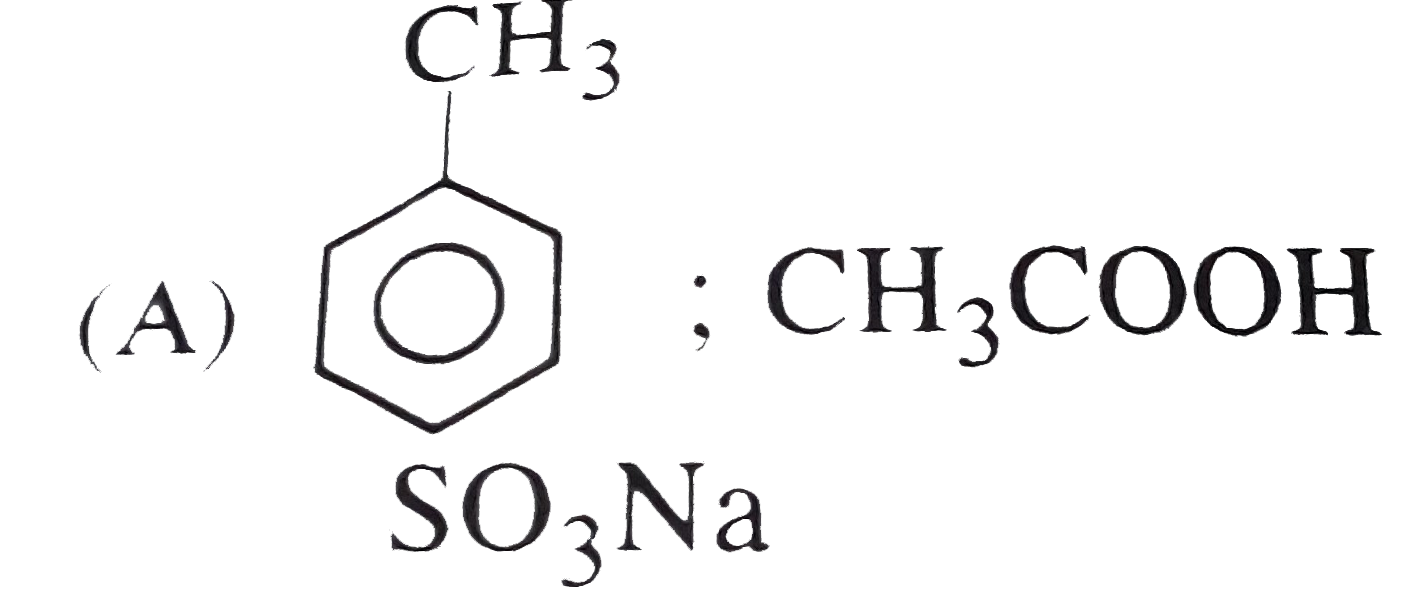Assertion : Benzene forms benzene sulphonic acid with fuming H2SO4 at high temperature .
Reason : The attacking species is SO3
If both assertion and reason are true and the reason is the correct explanation of the assertion
If both assertion and reason are true but reason is not the correct explanation of the assertion
if assertion is true but reason is false
If assertion and reason both are false
To analyze the given assertion and reason, we will break down the statements and provide a step-by-step explanation.
Step 1: Understanding the Assertion
The assertion states that benzene forms benzene sulfonic acid when reacted with fuming sulfuric acid (H₂SO₄) at high temperatures.
- Benzene (C₆H₆) is an aromatic hydrocarbon that can undergo electrophilic substitution reactions.
- Fuming sulfuric acid contains a high concentration of sulfur trioxide (SO₃), which is a strong electrophile.
Step 2: Reaction Mechanism
When benzene is treated with fuming sulfuric acid, the following occurs:
1. Electrophilic Attack: The sulfur trioxide (SO₃) acts as the electrophile. In the presence of fuming sulfuric acid, SO₃ can generate the electrophile that attacks the benzene ring.
2. Formation of Benzene Sulfonic Acid: The electrophilic substitution reaction leads to the formation of benzene sulfonic acid (C₆H₅SO₃H).
Step 3: Understanding the Reason
The reason states that the attacking species in this reaction is SO₃.
- This is correct because SO₃ is the species that attacks the electron-rich benzene ring, leading to the substitution reaction.
Conclusion
Both the assertion and the reason are true statements. The reason correctly explains the assertion because SO₃ is indeed the attacking species that facilitates the formation of benzene sulfonic acid from benzene.
Final Answer
Both the assertion and reason are true, and the reason is the correct explanation for the assertion.
The assertion states that benzene forms benzene sulfonic acid when reacted with fuming sulfuric acid (H₂SO₄) at high temperatures.
- Fuming sulfuric acid contains a high concentration of sulfur trioxide (SO₃), which is a strong electrophile.
When benzene is treated with fuming sulfuric acid, the following occurs:
2. Formation of Benzene Sulfonic Acid: The electrophilic substitution reaction leads to the formation of benzene sulfonic acid (C₆H₅SO₃H).
The reason states that the attacking species in this reaction is SO₃.
Both the assertion and the reason are true statements. The reason correctly explains the assertion because SO₃ is indeed the attacking species that facilitates the formation of benzene sulfonic acid from benzene.
Both the assertion and reason are true, and the reason is the correct explanation for the assertion.
Topper's Solved these Questions
- HYDROCARBONBook:ERRORLESS Chapter:HYDROCARBONExercise:CRITICAL THINKING (Objective questions)
Explore 24 Videos
- HYDROCARBONBook:ERRORLESS Chapter:HYDROCARBONExercise:JEE SECTION (Only one choice correct answer)
Explore 93 Videos
- HYDROCARBONBook:ERRORLESS Chapter:HYDROCARBONExercise:ORDINARY THINKING (Objective question) (ALKYNE)
Explore 120 Videos
- HALOGEN CONTAINING COMPOUNDBook:ERRORLESS Chapter:HALOGEN CONTAINING COMPOUNDExercise:Critical Thinking (Jee (Advanced) 2018)
Explore 1 Video
- IONIC EQUILIBRIUMBook:ERRORLESS Chapter:IONIC EQUILIBRIUMExercise:JS Jee Section (JEE Advanced (Numeric answer type question))
Explore 1 Video
Similar Questions
Knowledge Check
Phenol is heated with conc. H2SO4 at high temperature gives,
Ao-phenol sulphonic acidBp-phenol sulphonic acidCm-phenol sulphonic acidDall of thesePhenol on reaction with H2SO4 at high temperature gives mainly
Ao - phenol sulfonic acidBpara - phenol sulfonic acidCmeta - phenol sulfonic acidDnone of these4-methyl benzene sulphonic acid reacts with sodium acetate to give
A B
B C
C D
D
Heating of alkanes with fuming sulphuric acid or oleum at high temperature, which forms sulphonic acid, is called
View SolutionSulphonation of phenol with conc. H2SO4 at 373 K gives
View SolutionWhen benzene sulphonic acid and P-nitrophenol are treated with NaHCO3, the gases released, respectively, are :
View SolutionAssertion : Molecular mass of bezxoic acid when determined by colligative properties is found high.
Reason : Dimerisation of benzene acid.
View SolutionDuring sulphonation, conc. H2SO4 is used for
View Solution

